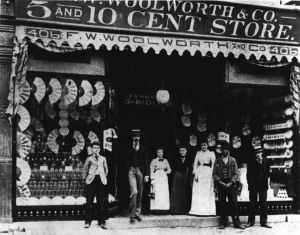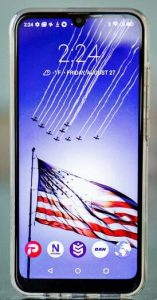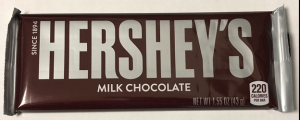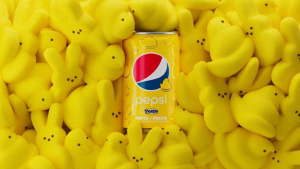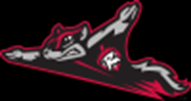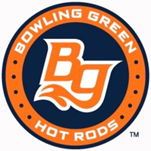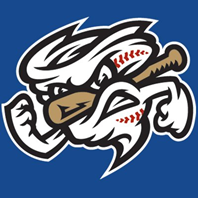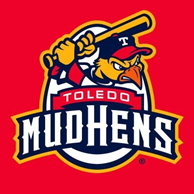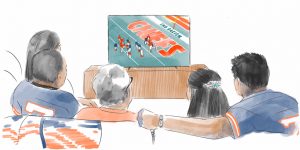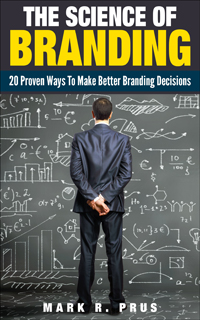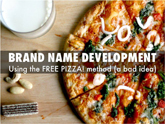News
Good And Bad COVID Naming
We’ve seen some good branding and some bad branding with COVID medicines. Here is a rundown of some of the branding in the COVID space:
Pfizer/BioNTech Vaccine = COMIRNATY®
Here is what Pfizer says about the brand name COMIRNATY: “…represents a combination of the terms COVID-19, mRNA, community, and immunity, to highlight the first authorization of a messenger RNA (mRNA) vaccine, as well as the joint global efforts that made this achievement possible with unprecedented rigor and efficiency – and with safety at the forefront – during this global pandemic.”
Whew…that’s a lot of explanation. In my experience, when you have to spend that much time explaining your name, you probably do not have a very good name.
Moderna Vaccine = SPIKEVAX®
SPIKEVAX is a more straightforward name that directly references the unusual spike protein of SARS-CoV-2 and “vax” for vaccine. This name is like a fastball down the middle of home plate. Nothing fancy, but pretty effective.
AstraZeneca Vaccine = VAXZEVRIA®
AstraZeneca says VAXZEVRIA is the COVID-19 vaccine for everyone. This naming strategy was revealed by the developers of the name. “When AstraZeneca approached Brand Institute about partnering on the name for their COVID-19 vaccine, their goals were clear,” said Brand Institute’s Chairman and CEO, James L. Dettore. “AstraZeneca is committed to helping end the deadliest pandemic in a generation by supplying the COVID-19 vaccine at no profit to hundreds of millions of people around the world. Every village and every town was a phrase that was introduced early on, and I still remember it. This creative direction became one of the dominant themes explored in the development of potential brand name candidates.”
Interesting sidebar: Did you know that each of the above vaccine names were developed by the same company? Brand Institute is the Goliath of the drug naming industry.
However, Merck may have topped all of the vaccine names with their new drug, molnupiravir.
Merck Oral Antiviral Medication = Molnupiravir (drug generic name)
Merck announced on October 1 that Merck and Ridgeback’s Investigational Oral Antiviral molnupiravir reduced the risk of hospitalization or death by approximately 50% compared to placebo for patients with mild or moderate COVID-19. This drug could be a game changer as it is a simple (5-day course of therapy) oral medication that can help treat COVID-19.
The generic drug name, molnupiravir, is also groundbreaking.
Generic drug names are not brand names. The Merck Manual explains the difference:
When a drug is approved by the Food and Drug Administration (FDA—the U.S. government agency responsible for ensuring that drugs marketed in the United States are safe and effective), it is given a:
• Generic (official) name
• Brand (proprietary or trademark or trade) name
For example, phenytoin is the generic name and Dilantin® is a brand name for the same drug, which is a commonly used antiseizure drug. Diazepam is the generic name of a sedative that is marketed by some companies under its generic name and by other companies under brand names such as Valium® or Vazepam®.
Dean Li, Merck’s head of research and development, revealed the origin of the molnupiravir name to the medical publication Stat News. “Our prediction from our in vitro studies and now with this data is that molnupiravir is named after the right — you know, it’s named after Thor’s hammer [Mjollnir], this is a hammer against SARS-CoV-2 regardless of the variant.”
Well played Merck. I think Merck just won the COVID naming challenge!
Don’t Outgrow Your Name
Frank Winfield Woolworth, who founded the F. W. Woolworth Company in 1879, was the innovator in variety stores known as “Five-and-Ten-Cent Stores” which featured a wide selection of low-priced merchandise at a low fixed price. For many years the company did a strictly “five-and-ten cent” business, but in the spring of 1932, it added a 20-cent line of merchandise. By 1935, the company’s directors decided to discontinue selling-price limits altogether.
A similar situation arose this past week when Dollar Tree Inc., who is known for selling goods for $1, announced it will establish new higher price levels such as $1.25 and $1.50, citing broken supply chains and higher labor costs as the reasons for the increase.
Dollar General Corp. broke the $1 price point several years ago, and Five Below Inc., which features goods at prices below $5, recently announced it will sell goods priced above $5.
Have these brands outgrown their names?
I believe they have outgrown their names, but I also do not expect them to change their names. Establishing a new trademark is expensive and time consuming, and companies would not want to risk losing their existing equity in their brands.
However, their situation should make you think about your branding situation, especially if you are just starting your company. Don’t pick a name that you will outgrow in a few years.
Burlington Coat Factory was started as a wholesale outerwear business in Burlington, New Jersey. I’d say their name was limiting in two ways: geographically (because they would expand beyond Burlington, New Jersey) and from a product line standpoint as they quickly evolved to other clothing items. How much business was lost because people thought they sold only coats?
The Dunkin’ Donuts brand recently dropped Donuts from their name and became just Dunkin’ to reflect the fact that most of their sales come from drinks not donuts.
Don’t outgrow your name. Plan for future expansion by at least considering what your business will look like in 10 years. Then make sure your name can accommodate that future!
Freedom Phone – A Master Class in Branding and Positioning
A 22-year-old Bitcoin Millionaire has launched a “smartphone for Conservatives” called The Freedom Phone. Here is the New York Times article that details his effort.
The name is great. The positioning is great (liberate Americans from their “Big Tech overlords”). The marketing has been great (his launch video has over 1.8 million views). And he’s already sold over $6 million worth of these phones.
The problem? The phones suck. CNET, the product-review site, said the $500 device appeared to be “nearly on par with a $200 budget Android phone.” Ouch.
The NYT article explains some of the issues that arise when trying to launch a new phone without the assistance of the major tech companies. But I have no sympathy for anyone who is dumb enough to buy this. Or any of several products marketed via the Conservative media these days (Ivermectin anyone?).
But you’ve got to admire the straightforward naming and positioning. Credit where credit is due.
Hershey’s Versus Hershey’s
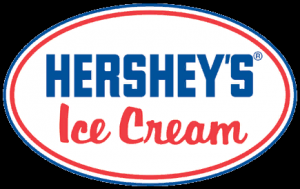
Would you guess that the same company that makes Hershey’s Ice Cream also makes Hershey’s Chocolate? I did. However, despite being founded in the same city, in the same year and having the same name, Hershey’s ice cream and Hershey’s chocolate have no affiliation.
The Hershey Chocolate Company was founded by Milton S. Hershey in 1894 as a subsidiary of his Lancaster Caramel Company. Hershey Creamery Company, also known as Hershey’s Ice Cream, was also founded in 1894 by Jacob Hershey (not a relative of Milton Hershey) and four of his brothers in 1894.
Both companies have been engaged in on-again, off-again litigation for about a century over the Hershey’s name and trademark (Hershey Chocolate filed the first lawsuit between these parties in 1921). Eventually they reached a settlement where each company was to disclaim the other. Today, the ice cream company’s website notes that it is “not affiliated with Hershey’s Chocolate” at the bottom of its homepage (©PRODUCTS OF HERSHEY CREAMERY CO. − NOT AFFILIATED WITH HERSHEY’S CHOCOLATE). Hershey’s Chocolate does not return the favor as they make no mention of Hershey’s Ice Cream.
Would the Hershey’s name be able to be shared in this manner if both companies tried to get the trademark today? I think it is doubtful because of the similarity of the goods offered. Nevertheless, this stands as an example of how two very similar names can coexist.
Do It Yourself With Fiverr
I’ve been asked several times recently if I could help a client design a logo for a name we developed for them. While that is certainly doable, I tell clients that is not in our wheelhouse. We are name developers and they would be better served by hiring a qualified graphics designer to bring their name to life.
My “go to” solution for logo designs is Fiverr. If you are not familiar with Fiverr, it is a global network of freelancers that provide wonderful support services for businesses (at very reasonable prices…starting at $5). Here is an easy way to search for what you are looking for on Fiverr:
For logo design, I can attest that I’ve used several designers on Fiverr and have been happy with the results. In particular, when you get to the Fiverr site, search for antonclevela97 who has done excellent work for me over the years!
Please note, this post contains affiliate links. If you use these links to buy something we may earn a commission (at no cost to you). Thanks.
Why Not Peepsi?
Pepsi and Peeps are collaborating on a new drink that combines the taste of a Pepsi with the “pillowy-soft and sweet” marshmallow flavor of Peeps. The new cola is named “Pepsi x Peeps.”
Several bloggers are asserting that Pepsi should have named the drink “Peepsi.” Clever idea, but both Pepsi and Peeps were smart enough to avoid that.
Using the name “Peepsi” would dilute both the Pepsi and the Peeps trademarks. In layman’s terms, naming this product “Peepsi” would be the legal equivalent of shooting yourself in the foot because you would weaken your existing trademarks and provide a perfect example of how a competitor could legally get close to the Pepsi or Peeps trademarks.
For example, if “Peepsi” were the name of this product, how could Pepsi hold back a competitor from launching a Pepsii or a Pipsee product?
The first rule of branding should be “do no harm to your own brand.”
The Annual Minor League Baseball Team Name Report
Every year I do a blog post on the interesting names of minor league baseball teams. Here is this year’s crop of names (all images By Source, Fair use, Wikipedia):
Chattanooga Lookouts – Naming a baseball team the Lookouts might seem odd, but Lookout Mountain is just a few miles south of the city and is a famous Civil War battle site. When the sky is clear and with a good set of binoculars you can see up to 7 different states from the summit. The Lookouts are one of the oldest teams in the league, having played in the Southern League off-and-on since 1885 and they have kept the Lookouts name the entire time.
Richmond Flying Squirrels – When the team moved to town in 2009, the Richmond Flying Squirrels name was chosen through a Richmond Times-Dispatch readers’ “name-the-team-contest.” While I am generally not a fan of naming contests, this one had a good result. Other finalist names were the Rock Hoppers, Hambones, Rhinos, Flatheads, and Hush Puppies. Fans love it too, as Richmond has one of the highest levels of merchandise sales among minor league teams.
Bowling Green Hot Rods – This name is a nod to the presence of the automotive industry in the area, which includes the National Corvette Museum, Holley Carburetor, Beech Bend Raceway, and the Bowling Green Assembly Plant. Their mascot is an anamorphic bear named Axle.
Omaha Storm Chasers – The team has been the Triple-A affiliate of the Kansas City Royals since their inception in 1969 and were originally known as the Omaha Royals. In 1998 when they joined the Pacific Coast League they were briefly known as the Omaha Golden Spikes (1999–2001) before reverting to the Royals name. They rebranded as the Storm Chasers in 2011 as a result of a fan naming contest. What else would you call a team based in Tornado Alley?
Toledo Mud Hens – Professional baseball had been played off and on in Toledo since 1883, but the Mud Hens era began in 1896 with the “Swamp Angels”, who played in the Interstate League. They played in Bay View Park, which was located near marshland inhabited by American coots, also known as “mud hens.” For this reason, the local press soon dubbed the team the “Mud Hens”—a nickname that has stuck to Toledo baseball teams for all but a few years since. The current incarnation of the Toledo Mud Hens started when an International League franchise moved to Toledo from Richmond, Virginia in 1965. The franchise became famous when Gene Cook became the general manager and got Jamie Farr to incorporate the Mud Hens in Farr’s M*A*S*H character’s background. Toledo has some of the highest sales of team merchandise in the minor leagues.
Someday I hope to be involved in a minor league baseball naming project. Put me in coach, I’m ready to play…today!
The Cleveland Baseball Team (Formerly The Cleveland Indians)
The Cleveland Indians just announced that they will change their name. The Team spokesperson suggested they would use input from the public to develop a new name. Here we go again!
Public naming contests used to be a reasonable idea. However, today naming contests quickly become an effort to come up with really stupid names, then vote those stupid names into the lead. As a reminder, Boaty McBoatface was the people’s choice in a 2016 contest to name a research ship in the U.K.
CBS Sports came up with a few options that reflect the history of the team: Cleveland Spiders, Cleveland Naps, Cleveland Blues.
Or maybe go with something more current and trendy like the Cleveland Rockers (the Rock and Roll Hall of Fame is a big attraction in Cleveland).
Just don’t expect a public naming contest to generate anything positive…or else your team will be called “The Flaming Cuyahogas.”
Racist Branding?
Notice the juxtaposition of the Chiefs branding with the “End Racism” end zone printing. The irony in this image is stunning!
GABRIELLA TRUJILLO
In 2020 there has been a strong push for sports teams to change their branding if they are using a Native American name as a team mascot. Earlier this year the Washington Redskins changed to The Washington Football Team (I bet merchandise sales are not big for that moniker).
However, in a recent article on fivethirtyeight.com (https://fivethirtyeight.com/features/hundreds-of-schools-are-still-using-native-americans-as-team-mascots/) Hope Allchin notes that there are some sports teams that are fighting this trend.
Most states allow the use of Native American mascot names. Maine is the only state that banned it. A few years ago the NCAA adopted regulations indicating that teams with “hostile and abusive racial/ethnic/national origin mascots, nicknames or imagery” would be prevented from hosting NCAA championship events and required to use equipment that didn’t display that imagery in championship games. But there is a loophole. The NCAA allows Native American mascot names if the name is supported by a local Indigenous tribe. For example, because a single band of the Seminole tribe — the band that resides in Florida — supports the use of the Seminole mascot, Florida State University can continue its use of the Seminole mascot.
Another example of continued use of Native American mascots is those used by tribal high schools where students are primarily Native Americans. In this instance, Native American mascots serve as cultural identification rather than cultural appropriation. Around 2 percent of Native mascots are used at tribal high schools.
But there are still holdouts such as the Kansas City Chiefs. While the Chiefs have instituted several efforts to reduce the appearance of being racist (e.g., no face painting or wearing of feather headdresses), they are sticking to the Chiefs nickname.
The Washington Redskins were forced to change their name through a combination of political and economic pressure from local politicians, sponsors and advertisers. FedEx, who is the naming rights sponsor of the FedEx Field where The Washington Football Team plays, was a leader in getting ownership to make the change. Until the Chiefs organization receives similar economic pressure from advertisers and sponsors, they will not change. We will see how this plays out!
Almond Milk. Where Do You Draw The Line?
Is almond milk really milk? It depends.
Ask anyone associated with the US Dairy Industry and the answer is a resounding NO. They’ve sued to stop names like almond milk, oat milk, or soy milk. They would prefer names like “oat drink,” “soy beverage,” and “almond-based dairy alternative.” Those names certainly do not sound appetizing to me!
Ask the producers of plant-based milks and their answer is YES.
The FDA actually has official “standards of identity” that require milk to be “the lacteal secretion, practically free from colostrum, obtained by the complete milking of one or more healthy cows.” However, the FDA refuses to enforce these regulations.
Where do you draw the line? Should fake meat products be allowed to call themselves meat? Should “vegan leather” be allowed to be called leather?
Where do you draw the line?


